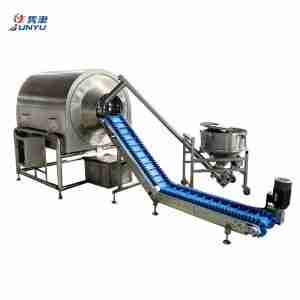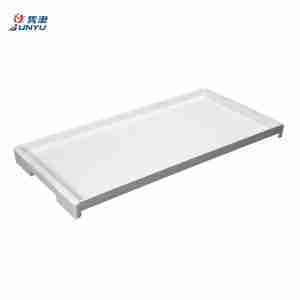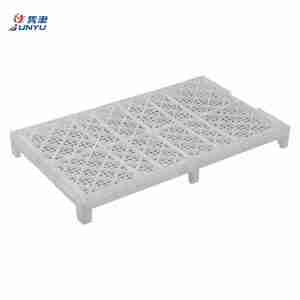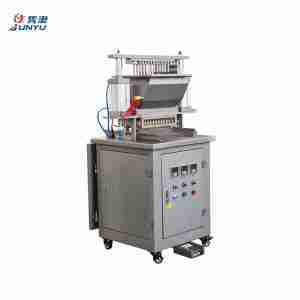Our Liquorice Candy Production Line is a sophisticated solution for manufacturers seeking to produce a variety of licorice and soft candies with efficiency and consistency. This line is designed to cater to the creation of classic licorice candies, as well as innovative products like Sour Belt Candy and multicolored sugar coated sour belt chew candies.
Key Components:
Range of Application: This production line is not only suitable for traditional licorice candy but also for creating a spectrum of sour belt candies, including the vibrant Rainbow Belt Gummy Sour Candy. The versatility of the line allows for the production of soft candy strips in various shapes and sizes, all customizable to include sour or sweet fillings as per customer requirements.
Features and Benefits:
Quality Assurance: Our Liquorice Candy Production Line adheres to the highest quality standards, ensuring that every candy produced meets consumer expectations for taste and texture.
After-sales Support: We provide comprehensive after-sales support, including a warranty, maintenance services, and a reliable supply of spare parts.
Pricing and Availability: For detailed pricing and availability, please contact our sales team for a personalized consultation.
Dive into the mesmerizing world of licorice candy production, where the rich history of this ancient sweet meets modern manufacturing techniques. From the earthy goodness of its natural flavor to the chewy delight it brings, licorice candy has a unique place in the confectionery universe. This extensive production description will guide you through the intricate process of creating a licorice candy production line, from ingredient selection to the final packaging.
The journey of licorice candy begins with the careful sourcing and preparation of its key ingredients. The primary component is the extract from the roots of the Glycyrrhiza glabra plant, commonly known as licorice. This extract provides the candy with its distinctive taste and numerous health benefits. Other ingredients include sugar, corn syrup, and various flavorings and food-grade colorings to enhance the final product.
Upon receipt, the licorice roots undergo a thorough cleaning process to remove any dirt or impurities. They are then roasted to bring out their natural sweetness and to prepare them for extraction. This step is crucial as it affects the flavor profile of the final product.
The roasted roots are then processed to extract the valuable licorice flavor compounds. This is typically done through a solvent extraction process, which separates the flavor compounds from the plant material.
In the next stage, the extracted licorice flavor is combined with sugar, corn syrup, and other ingredients in large mixing vessels. This mixture is cooked to precise temperatures to achieve the desired consistency and texture. The cooking process also helps in caramelizing the sugars, adding to the candy’s flavor.
Once the basic licorice mixture is ready, it’s time to add specific flavors and colors. Whether it’s traditional black licorice or the more vibrant red, green, or yellow varieties, food-grade colorings are added to achieve the desired hue. Flavorings such as anise, mint, or even chocolate can be incorporated to create a wide range of licorice candy varieties.
After the mixture reaches the appropriate temperature, it is cooled and then pulled. The pulling process is a traditional method that involves stretching and folding the candy to introduce air, creating a chewy texture. Modern production lines may use automated pullers for this task, ensuring consistency and efficiency.
The pulled licorice is then cut into the desired shapes and sizes. While traditional licorice is often in rope form or twists, modern production lines can create a variety of shapes, such as rounds, wheels, or even novelty forms.
The cut licorice pieces are placed on racks and allowed to dry and harden. This process can take several hours and is essential for achieving the candy’s final texture. In some cases, a controlled environment with specific humidity levels is maintained to ensure uniform drying.
Each batch of licorice candy undergoes rigorous quality control checks. This includes visual inspections for appearance, texture, and size, as well as taste tests to ensure the flavor is consistent with the product specifications.
The final licorice candies are then packaged. Depending on the product, this can range from simple plastic wrapping for individual pieces to more elaborate packaging for gift sets or bulk sales. Modern packaging machinery ensures that the candies are sealed in a way that preserves their freshness and quality.
Proper storage is critical for maintaining the quality of licorice candy. The packaged candies are stored in a cool, dry environment before being distributed to retailers or exported to various markets.
The global licorice market is estimated to grow at a CAGR of 4.1% during the period 2020-2025, indicating a robust demand for licorice products worldwide. This growth is driven by the increasing recognition of licorice as a healthy snack option and its unique taste profile.
When considering the purchase of a licorice candy production line, potential buyers often have a variety of questions to ensure the investment aligns with their business needs. Here are some pertinent questions that can guide them through the decision-making process:
By addressing these questions, potential buyers can make a well-informed decision about investing in a licorice candy production line that suits their business goals and operational requirements.
Are you intrigued by the process of creating your own licorice candy empire? Explore the market further, understand consumer preferences, and consider investing in a licorice candy production line. With the right combination of ingredients, equipment, and passion, you too can bring the joy of licorice to candy lovers everywhere.



